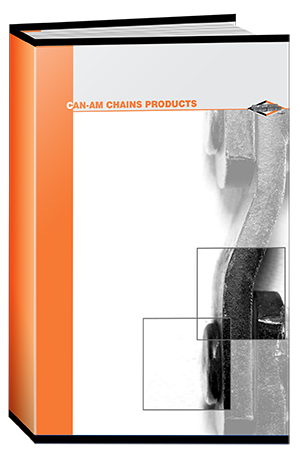Maintenance of Chain and Conveyor During Operation
 Inspection of chain in conveyor systems is equally as important as the inspection of other pieces of equipment. When a conveyor stops, some part of the manufacturing process usually stops with it. Chain failure due to lack of good maintenance programs, can and often does cause as much downtime as any piece of equipment in the plant. And yet, chain is given less consideration than most other areas of concern because little importance is attached to it. The following points are necessary to the successful operation of chain conveyors.
Inspection of chain in conveyor systems is equally as important as the inspection of other pieces of equipment. When a conveyor stops, some part of the manufacturing process usually stops with it. Chain failure due to lack of good maintenance programs, can and often does cause as much downtime as any piece of equipment in the plant. And yet, chain is given less consideration than most other areas of concern because little importance is attached to it. The following points are necessary to the successful operation of chain conveyors.
-
When it's possible, lubricate the chain with clean water introduced at the tail end of the conveyor, on the load side. This will allow the chain to move the water full length of the wear strip and keep the surface slick. If water cannot be used, a thin oil spray can often be substituted with success. Remember that oil is not suited to some applications, such as many log decks, where dirt may be present in quantity. Conditions will always dictate the type and amount of lubricant that can be used.
-
Keep the conveyor structure, troughs, and sprocket mounts in good condition.
-
Mill Chain - Do not allow the wear strip to become too badly worn. The chain barrel should not touch the wear strip itself. When it does, the chain will wear more quickly. Repair loose wear strip and grind butt welds smooth, to decrease wear and friction.
-
Drag Chain - The same safeguards apply as with mill chains. And, as stated previously, it is necessary to support drag chain "full width" even though the weight of the chain is actually supported by the sidebars. This is particularly important when heavy objects are being dropped onto the chain.
-
Sprockets - A hooked sprocket tooth will eventually hold onto the chain beyond its normal release point. The worst scenario would have the chain "wrap" the sprocket and break itself or tear up the drive. Buy new chain when the chain climbs the sprocket tooth. The pitch has elongated due to wear between the rivet and barrel and possibly elongation of the sidebar hole. The chain will continue to wear itself and the sprocket even more rapidly from this point onward. Keep the area around the idlers clear and the idlers themselves turning. Use sprockets if necessary to avoid excess wear on the barrels being dragged around the idler face, if the idler isn't functioning. For the small difference in cost, it's always advisable to install sprockets at the tail end of the conveyor. Keep idlers and sprockets aligned. Always install new sprockets with new chain.



